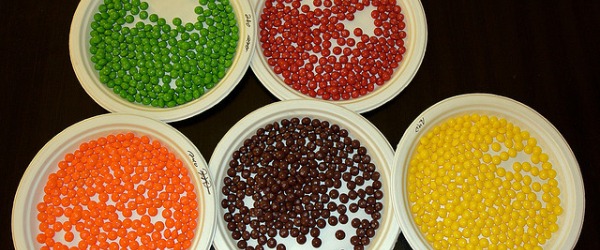If, like many people, you use fluorescent proteins to view your transfection efficiency or your CRISPR gene editing, you can also isolate cells with different expression levels of fluorescent proteins. Here are 5 ways to improve your sorting experiment when using a fluorescent protein.
1. Use a viability dye
When a cell dies, it stops expressing fluorescent proteins. This is due to either the GFP leaking out of the cell from loss of membrane integrity or a chemical change within the cell has affected the activation of the FP. By using a viability marker, such as DAPI, you can gate out the dead cells, and this will give you a much more accurate number of FP+ cells. If you are making a clonal cell line, it is particularly important that you use a viability marker to ensure that a live cell is sorted.
2. Use a doublet discriminator
Try as you might when dissociating cells into single cells, there will always be some cells that refuse to parted and remain as a clump. It is important that when running your sample, especially when sorting, to exclude these ‘doublets’. This can be done on the software by comparing the height or width vs. area of your scatter parameters. You can do this on forward scatter, side scatter, or both. By gating on single cells you can be sure that you are only sorting a single cell. Again, this is particularly important when sorting single cells, to ensure that you are only sorting one cell into each well.
3. Use the correct lasers
Do you know what kind of Red Fluorescent Protein you are really using? RFP is quite a generic term, but there are a whole host of different RFPs—all of which are optimally excited by a 561nm laser. However, only a couple are also excited by a 488nm laser. Let’s take DsRed as an example. A 488 nm laser can excite it, but it is better excited by a 561 nm laser. So, use a 561 nm laser, if it is available. In contrast, mCherry is beautifully excited by a 561nm laser, but if you try to excite mCherry with a 488nm laser, you will find that it is only excited around 5%. So, you are not going to get a true indication of your expression levels.
4 & 5. Use an ‘empty’ channel and a dotplot to help gate
When sorting using a FP such as GFP, it can be useful to open up an ‘empty’ extra channel, i.e., look at the autofluorescence in a channel you have no stain in. GFP is excited by a 488 nm laser and the emission is collected using a filter around 530/30. To look at GFP on a histogram, it can often be difficult to distinguish between the negatives and positives, especially if the GFP+ cells are rare. By looking at a dotplot of 530/30 vs. 585/16, we can visual the negative autofluorescent cells as a diagonal and then the GFP positives appear to the right. This makes it easier to gate them and makes your sorting purity better. This way of visualising single color on dotplots with an extra channel is useful when analysing or sorting any fluorochromes especially when working with more autofluorescent cells. It’s easy to see this in the figure below.

Figure 1. The same negative control (left) and GFP (right) sample displayed on a histogram and a dotplot using the empty channel. Using the diagonal of the autofluorescence on the dotplot makes it easier to gate weak GFP+ cells which would be indistinguishable in the histogram. The gating is much more accurate with the dotplot (80.5% positive compared to the 70% gated on the histogram).
Want a stunning, colorful poster that summarizes all the critical fluorescent protein properties like absorption and emission spectra, relative brightness, and quantum yield? Download Bitesize Bio’s ultimate guide to fluorescent proteins poster and stick it up in your lab!




